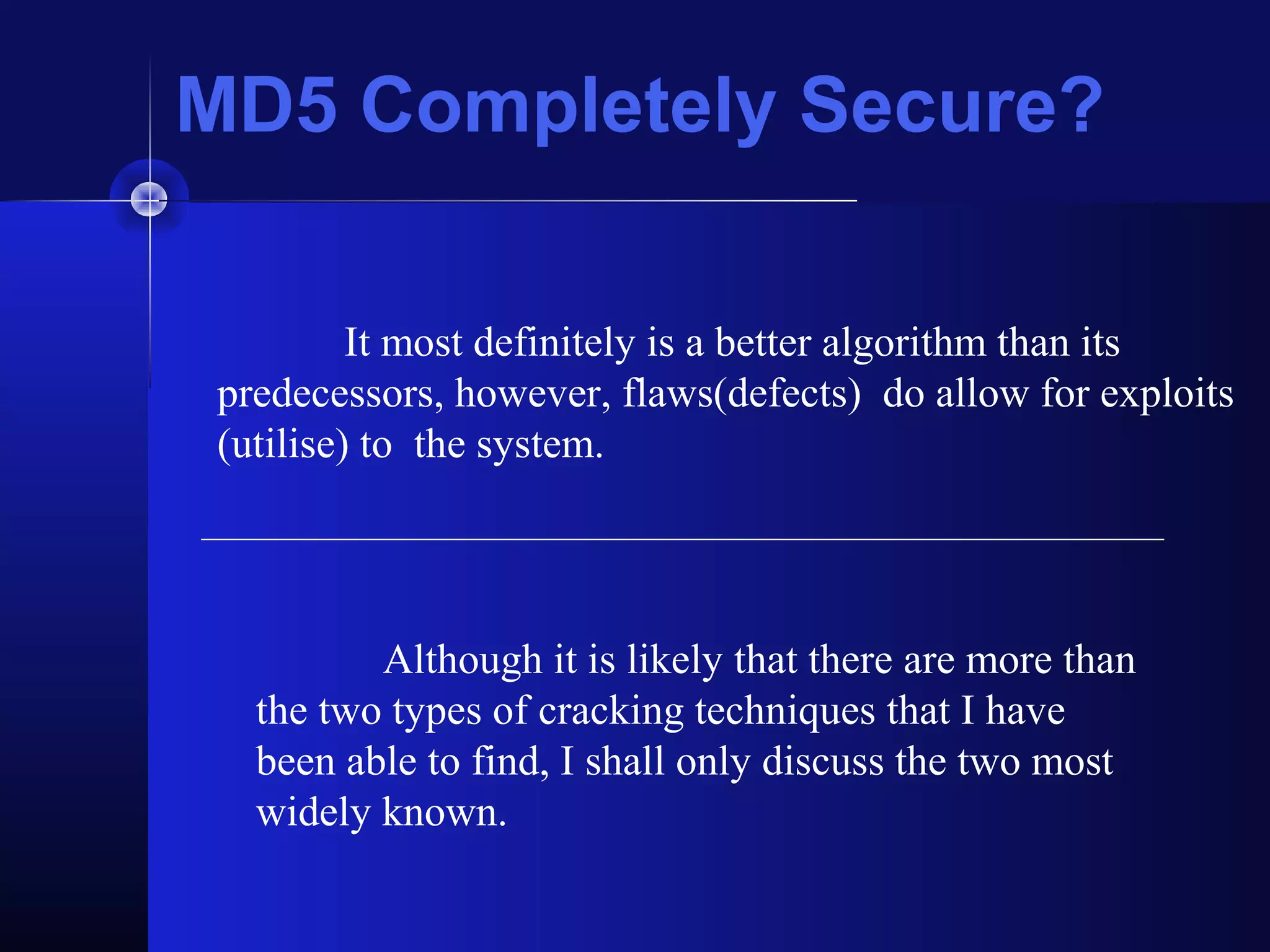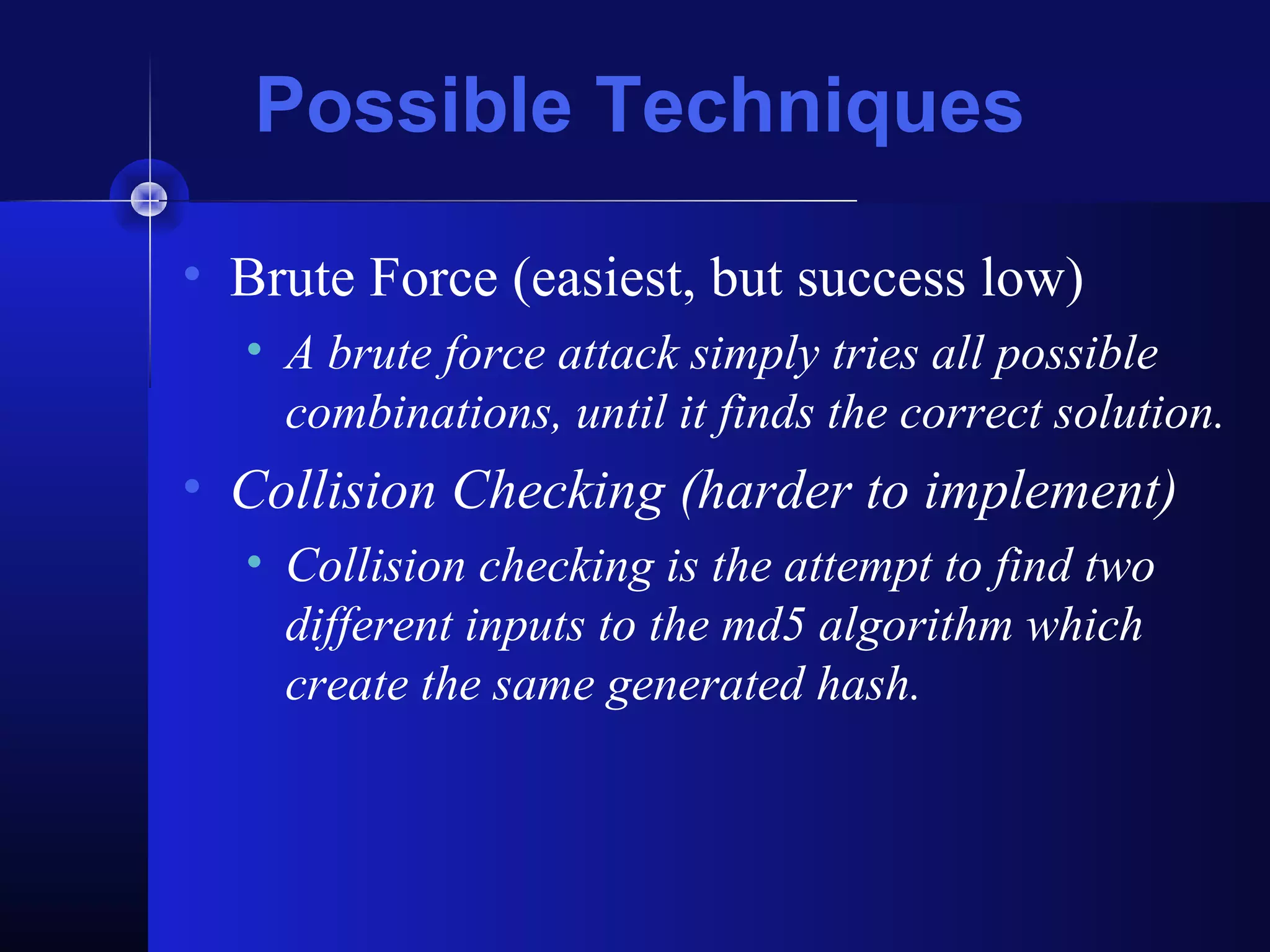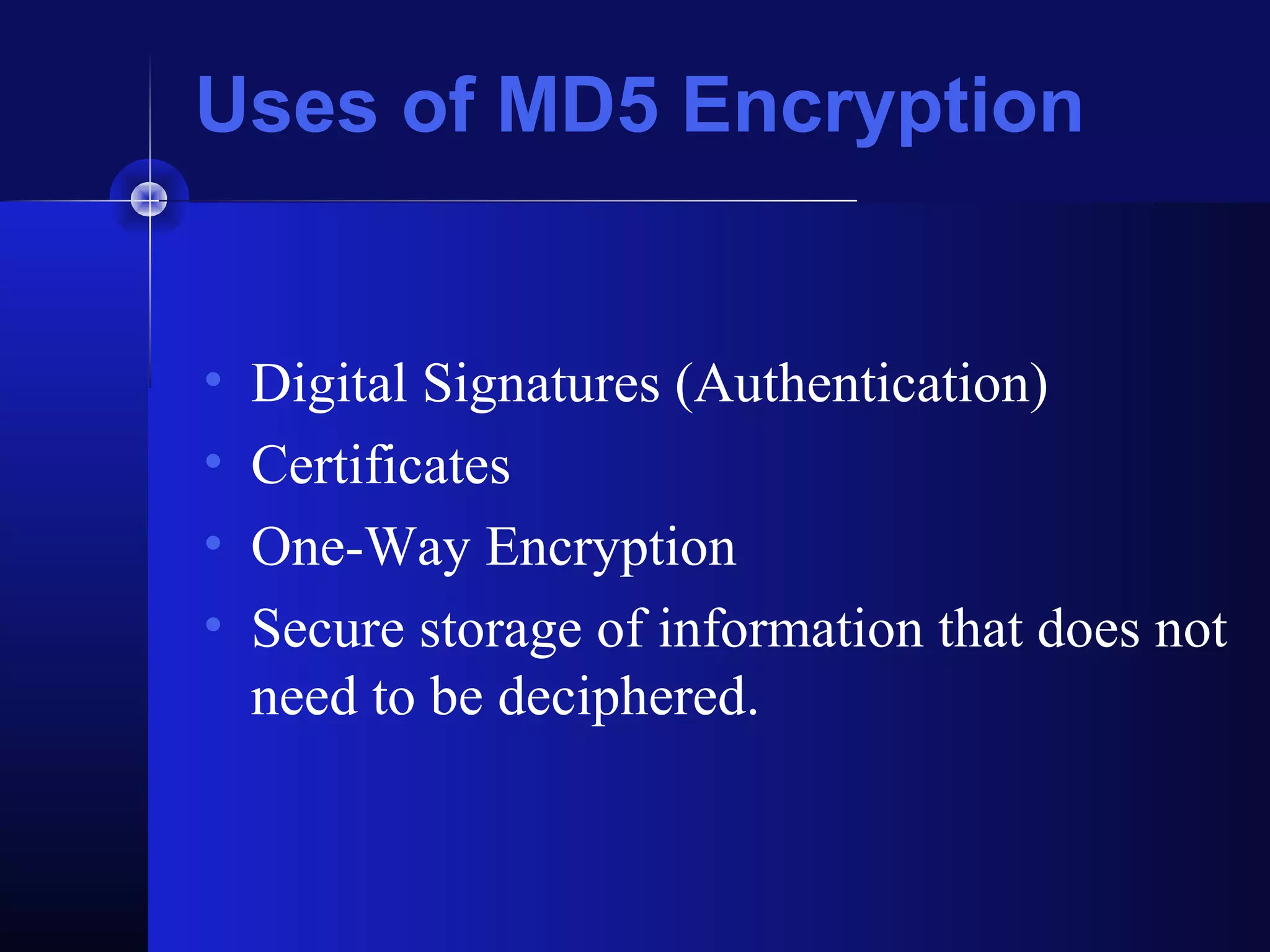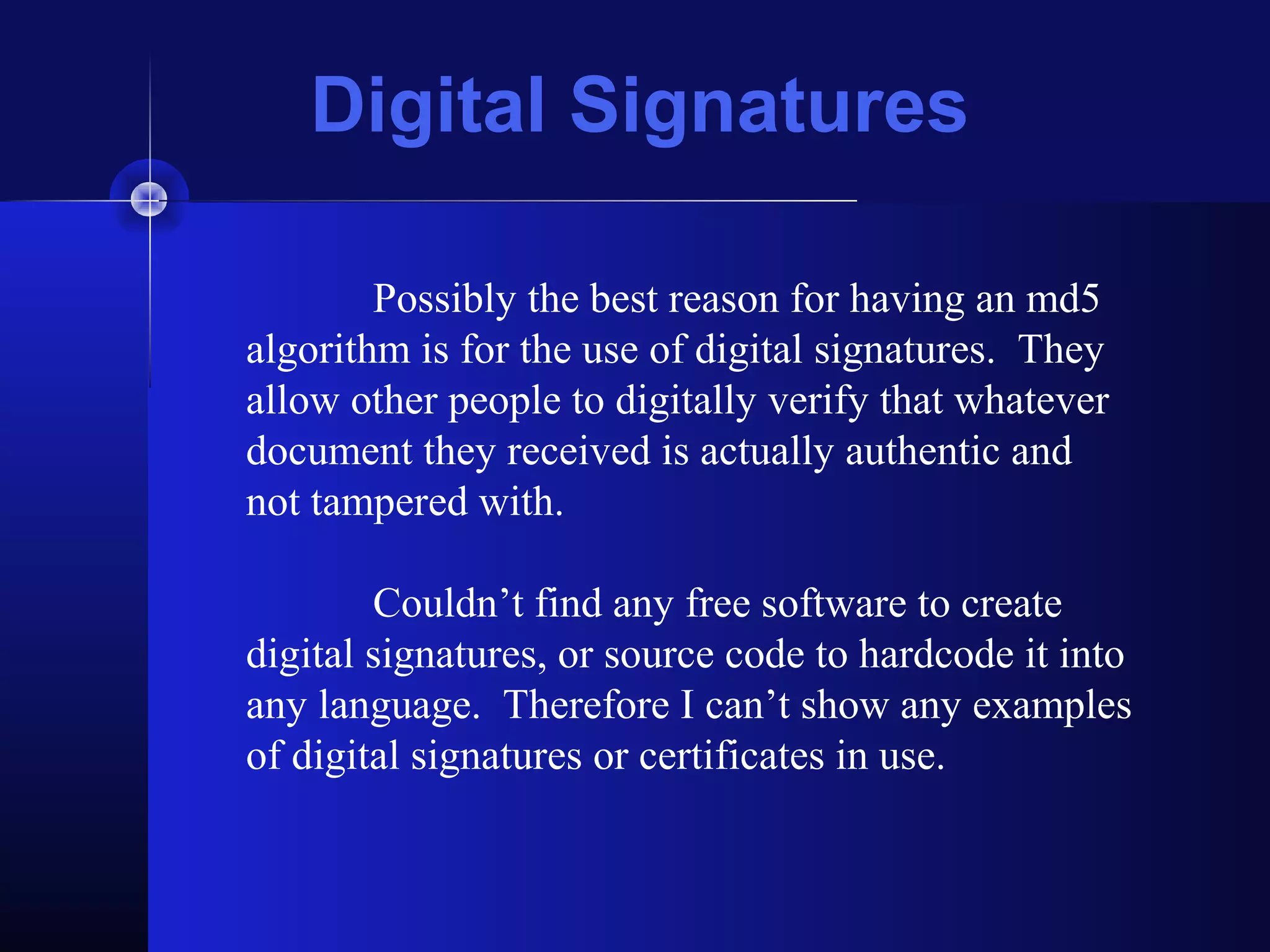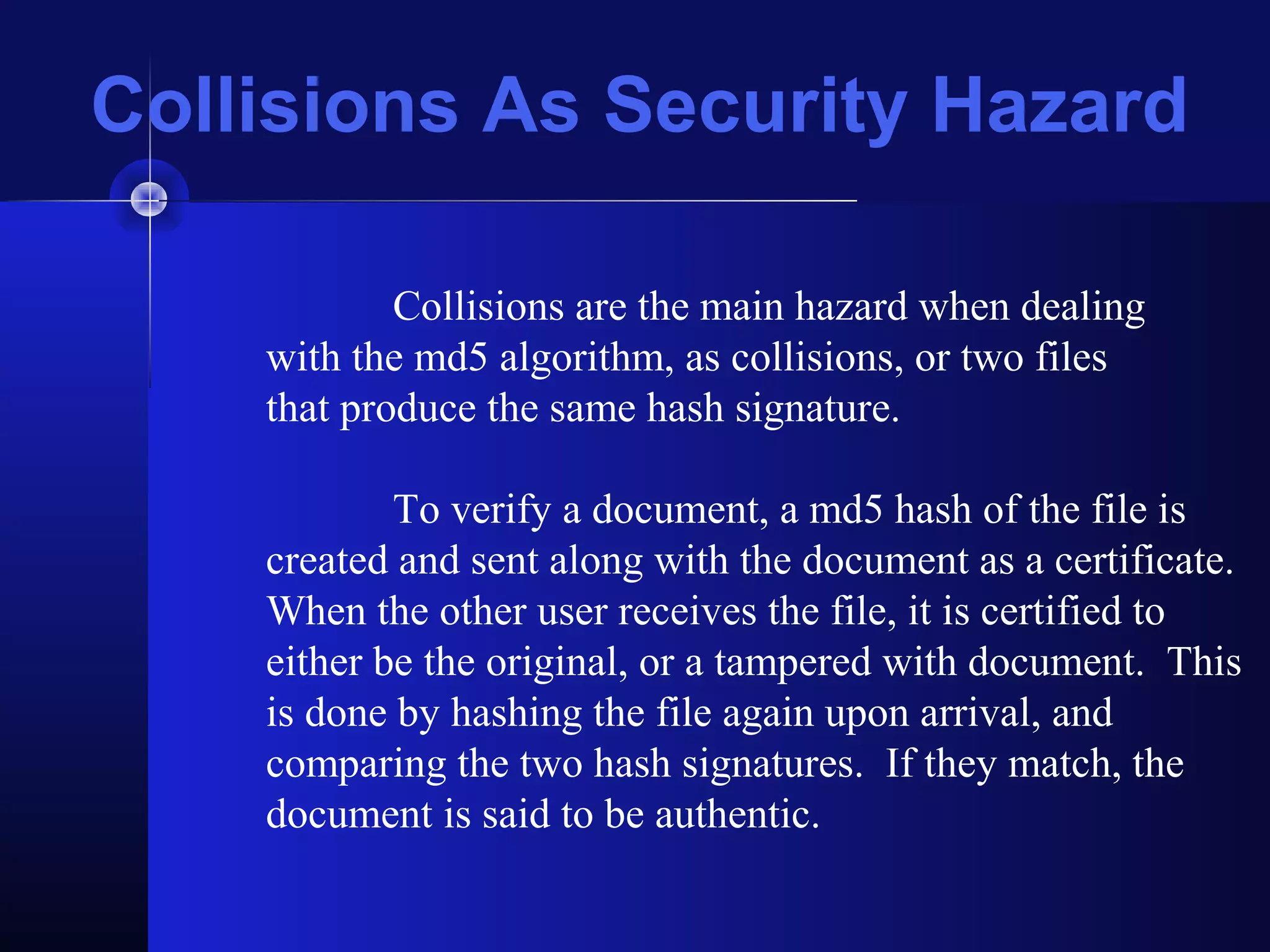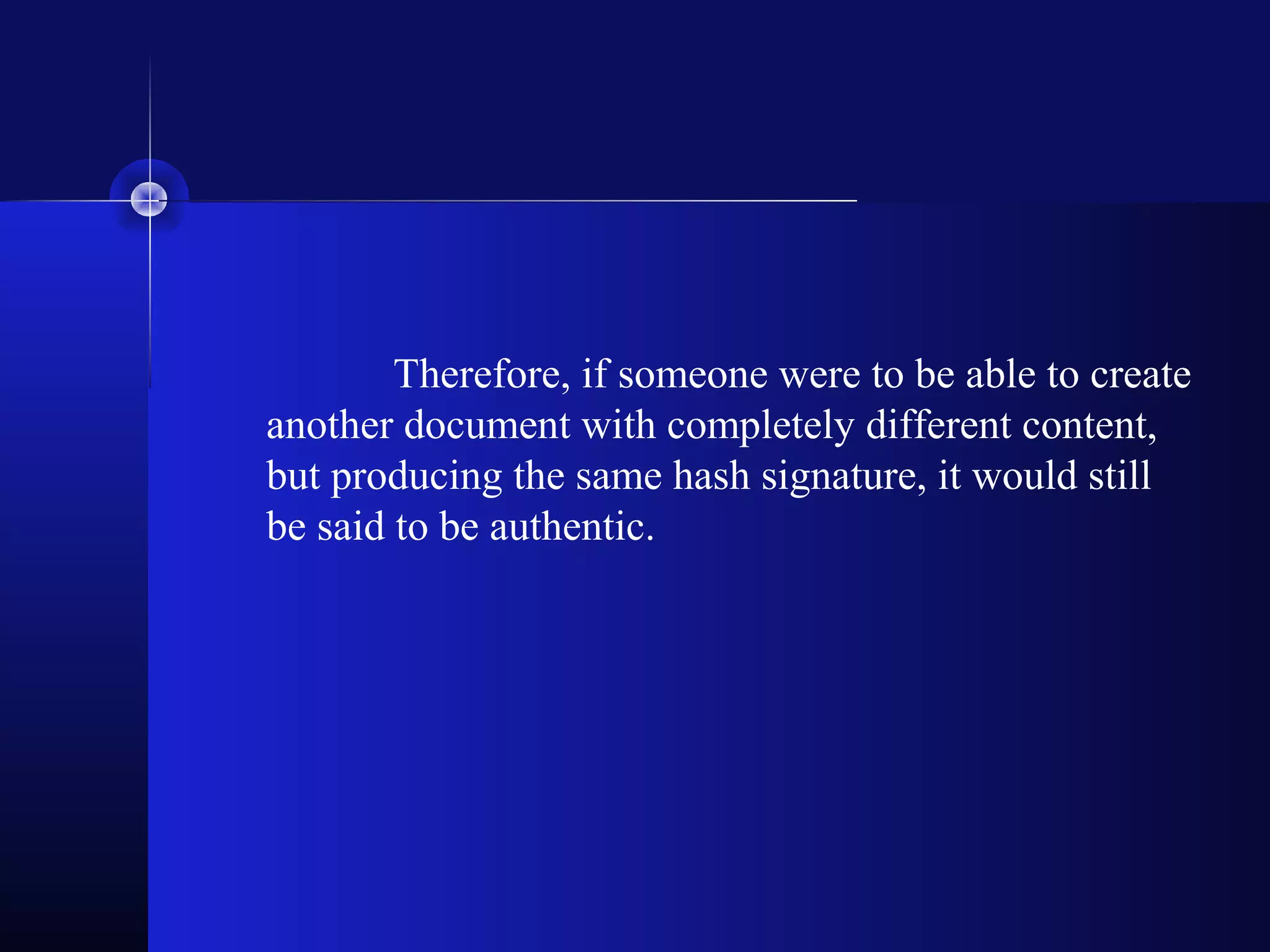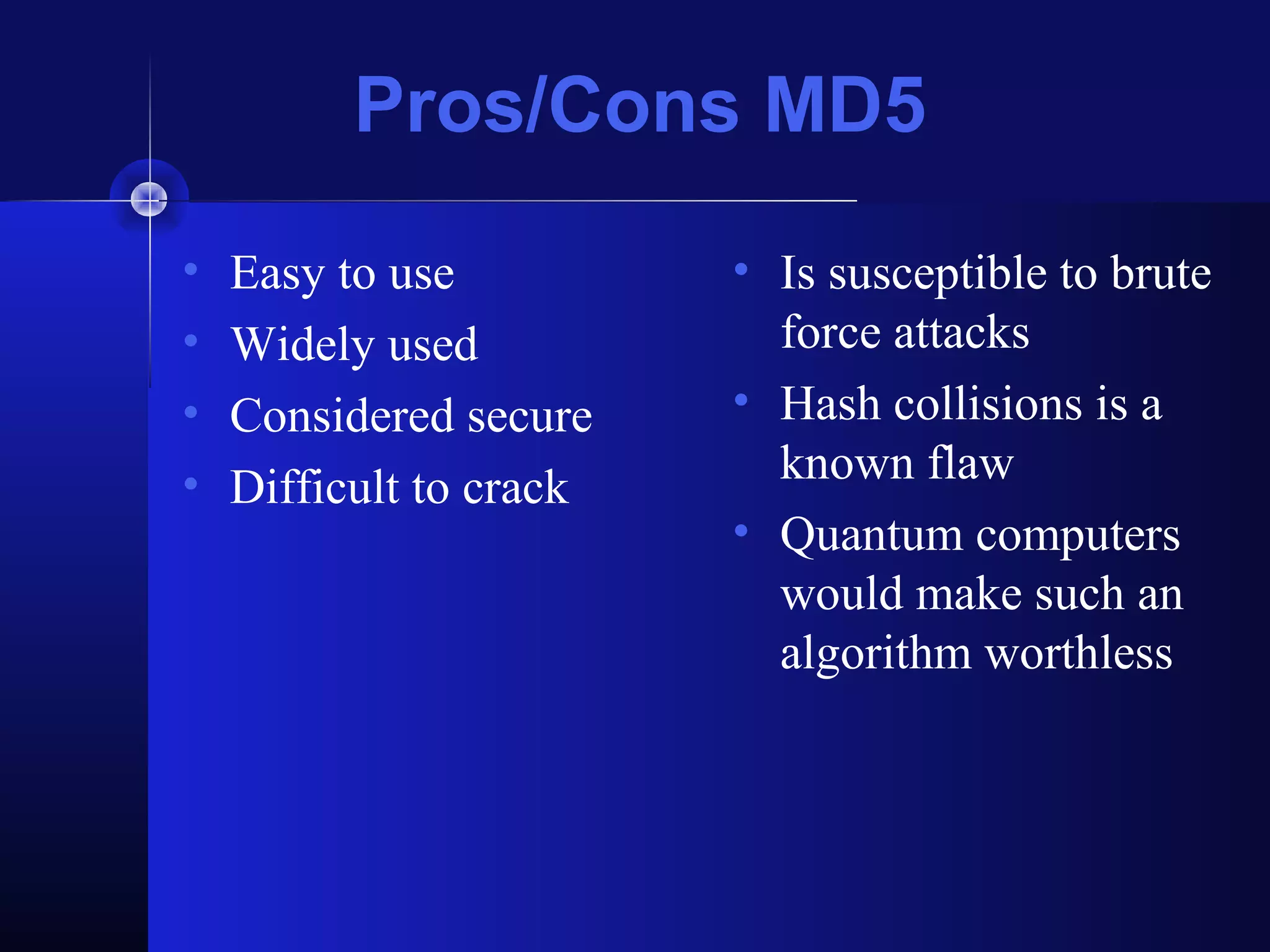MD5 & Hash Encryption provides an overview of MD5 and hash encryption algorithms. It discusses the purpose and examples of MD5, how the MD5 algorithm works, potential security risks like collisions, and practical applications through code. It also covers how difficult MD5 is to crack through brute force, though flaws in the algorithm allow for exploits, and discusses how MD5 is used for digital signatures, certificates, and one-way encryption storage.
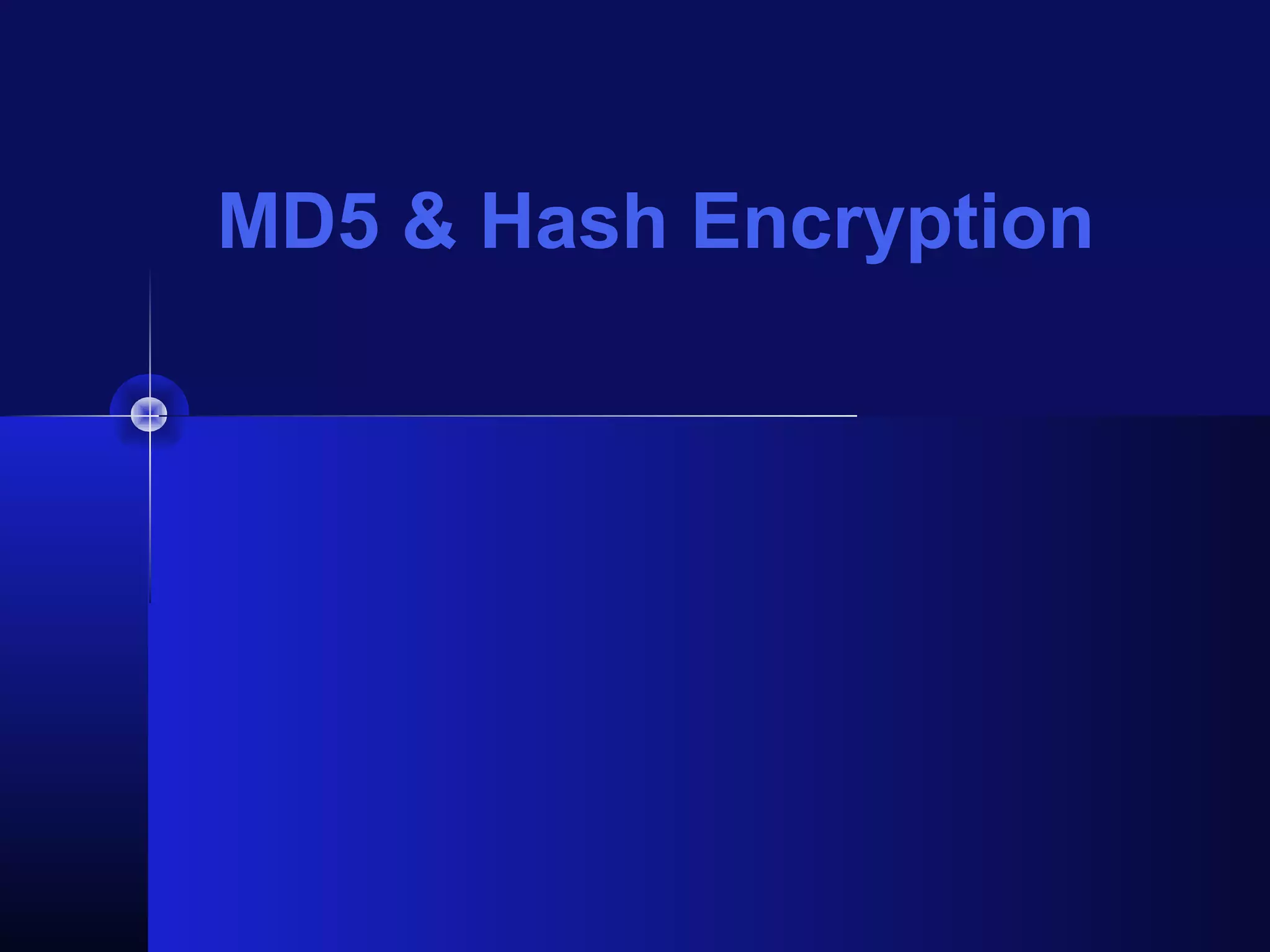
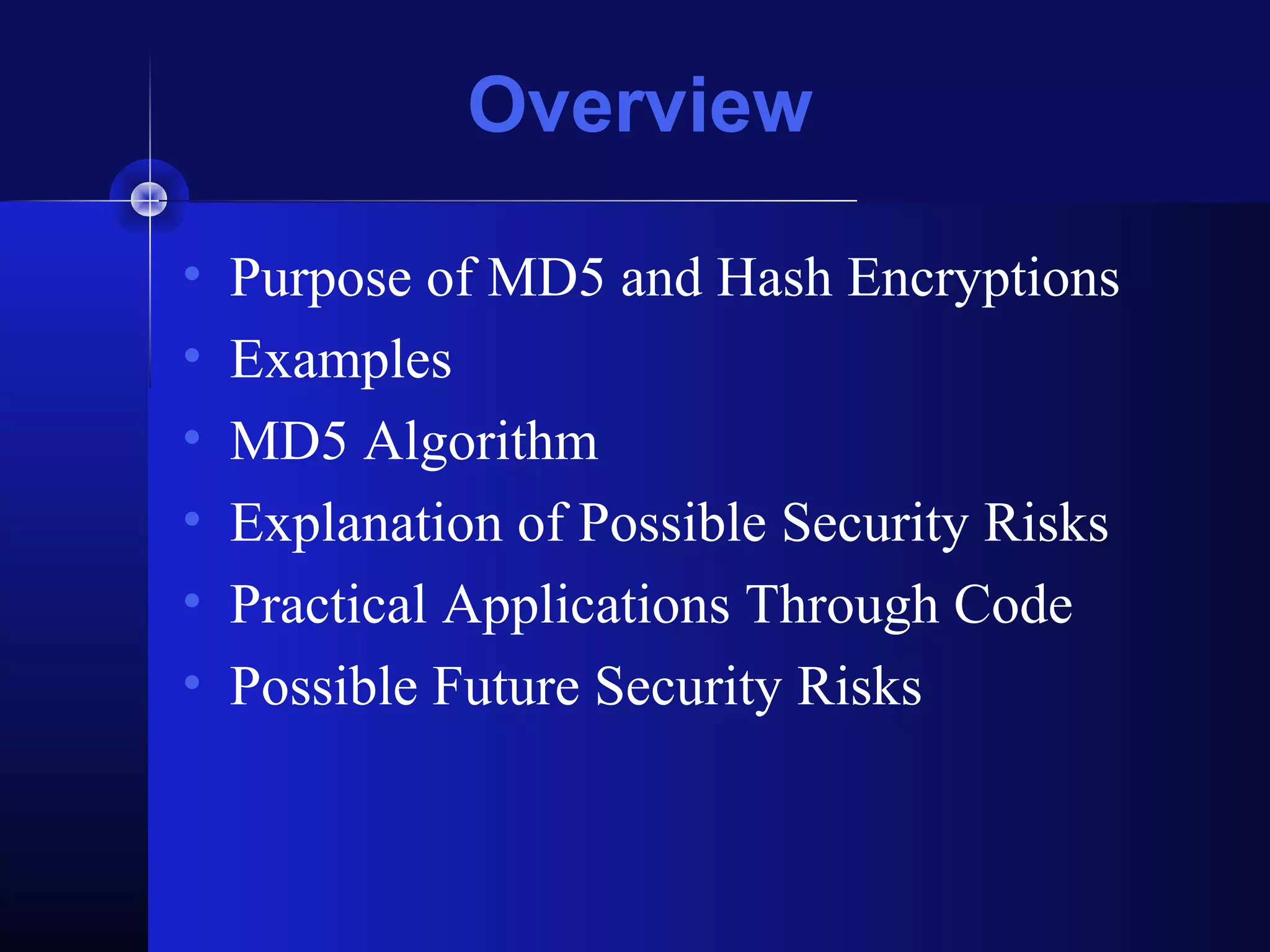
![[location] md5 attr. (word/file)
Attributes:
-s indicates string input, not file!
ex. md5 -s test
-r reverses print of hash/word
ex md5 -r -s test
-q overrides -r, only md5 sum printed
ex md5 -q -s test
-t built-in time test
ex md5 -t
Other Attributes: [-p -x]
Note:
-s must be the last attribute
or it will think everything
past is the string
Macintosh MD5 Terminal
Execution](https://image.slidesharecdn.com/6c4e8fd8-4c1d-4d1b-9243-2e44d441e79b-150629070544-lva1-app6891/75/MD5Algorithm-3-2048.jpg)
![Windows md5 Command Line
Execution
Not Built In To Windows Command Line
Example
md5sum [filename]
Ex: C:/md5sum test.txt
[Or wherever the md5sum.exe is located]
-b Reads Files In Binary Mode
-c Checks Digest Against Given List
-w Warns About Improperly Formatted md5 Checksums](https://image.slidesharecdn.com/6c4e8fd8-4c1d-4d1b-9243-2e44d441e79b-150629070544-lva1-app6891/75/MD5Algorithm-4-2048.jpg)

